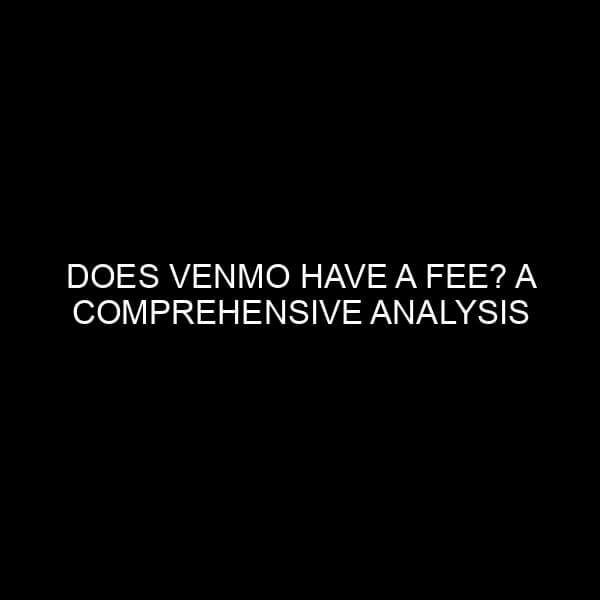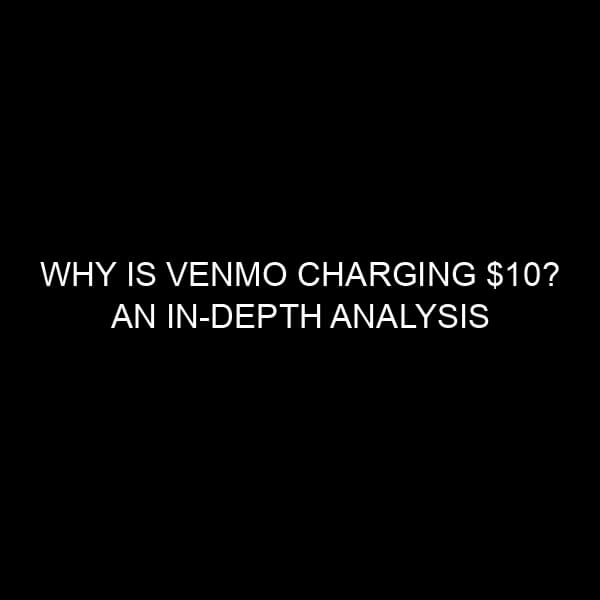Is Venmo Better Than a Bank Account? A Comprehensive Analysis
As we continue to traverse the digital age, many traditional systems are constantly being challenged. One notable shift is the rise of peer-to-peer (P2P) payment platforms. Venmo, a pioneer and leader in this arena, has garnered considerable attention and a substantial user base. But does its convenience and ease of use make it superior to the traditional bank account? In this article, we will explore both sides of the coin, examining the pros and cons of Venmo in comparison to traditional banking.
A Brief Overview of Venmo and Traditional Banking
Venmo, launched in 2009, has swiftly become synonymous with P2P payments, especially among millennials. It allows users to instantly send and receive money using a mobile app. On the other hand, traditional banks have been the bedrock of financial systems for centuries. With a myriad of services from savings and checking accounts to loans and credit facilities, banks have long been the go-to institutions for financial needs.
Ease of Transactions: The Venmo Advantage
- Instant Transfers: One of Venmo’s biggest selling points is its ability to conduct instant transfers between users. This is especially beneficial for splitting bills, paying friends, or even for small business transactions.
- Social Integration: Venmo incorporates a social feed that shows who you’ve transacted with (though the details can be kept private). This can add a fun element to the transaction, something traditional banks don’t offer.
Security: Banks Take the Lead
- Regulations and Insurances: Traditional banks are federally regulated and offer FDIC insurance up to $250,000. This means customers’ money is safe even if the bank fails. Venmo, while following regulatory guidelines, does not provide the same level of insurance.
- Robust Infrastructure: With their long-standing history, banks have developed robust security infrastructures. They employ a wide range of anti-fraud measures, making them slightly more secure than P2P platforms.
Fees and Costs: A Mixed Bag
- Venmo’s Free Transactions: For regular P2P transactions, Venmo charges no fees. However, when using a credit card or when opting for instant transfers to your bank, fees are incurred.
- Banking Fees: Traditional banks may have monthly maintenance fees, minimum balance fees, and even charges for wire transfers. But they also offer services like interest on savings, something Venmo doesn’t provide.
Accessibility and Usability
- Mobile Centricity: Venmo operates predominantly through its mobile app, making it extremely convenient for smartphone users. Its user interface is friendly, straightforward, and quick.
- Physical Branches: Traditional banks have both online and offline presences. This is an advantage for individuals who prefer in-person consultations or have complex financial needs.
Customer Service and Dispute Resolutions
- Instant Help: Banks, with their expansive infrastructure, often have dedicated customer service teams. This makes resolving disputes and addressing concerns comparatively easier.
- Limited Support: Venmo, while offering customer support, can sometimes be slower, especially when it comes to resolving payment disputes.
The Verdict: Which is Better?
Whether Venmo is superior to a traditional bank account largely depends on the individual’s needs. If you value quick P2P transactions and a user-friendly app, Venmo might be the better choice. However, if security, a range of services, and the assurance of FDIC insurance are your priorities, sticking with traditional banks is advisable.
In an ideal scenario, a combination of both can be the best approach. Using Venmo for casual transactions while maintaining a bank account for savings, large transactions, and more complex financial needs can offer the best of both worlds.
Conclusion
It’s important to note that the financial landscape is continuously evolving. New technologies and platforms are emerging, offering enhanced features and services. While Venmo has revolutionized the P2P transaction space, traditional banks have also been evolving, incorporating digital tools to enhance user experience. As a seasoned financial market and banking industry expert, I recommend always staying updated with the latest trends and technologies. Making informed decisions based on individual needs and the changing landscape is the best way to maximize benefits from these platforms.






